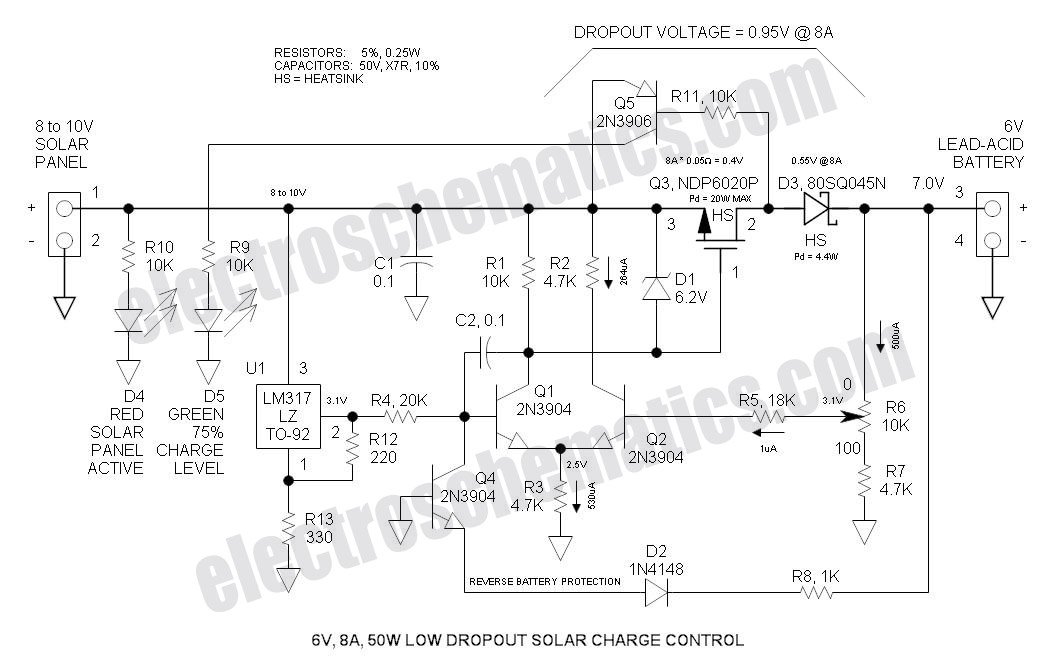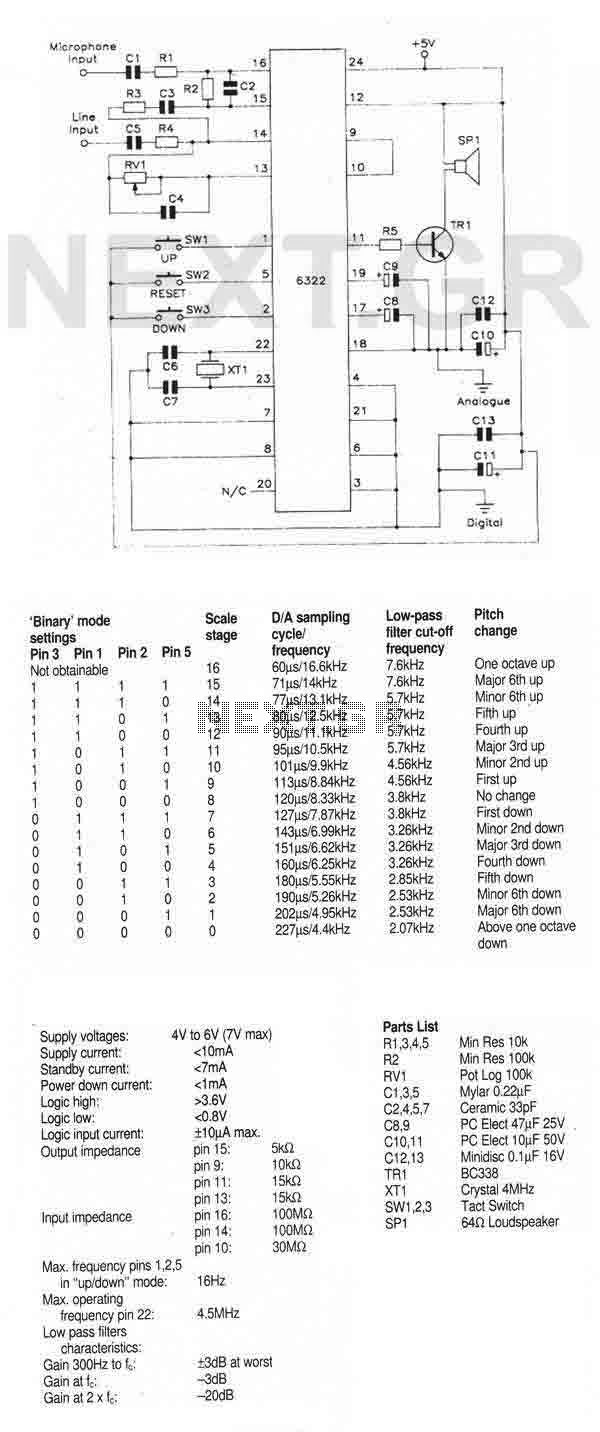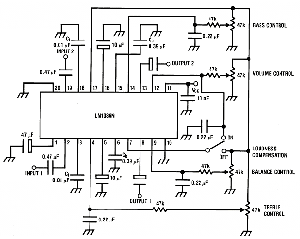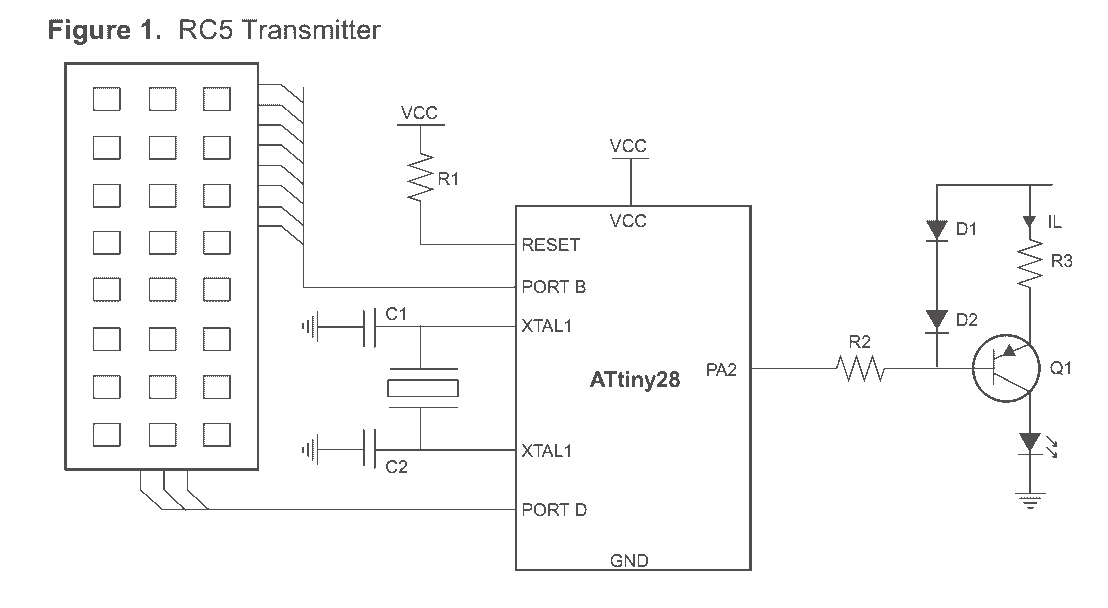
ULTRASONIC CONTROL RECEIVER

A five-stage amplifier consisting of transistors Q1 through Q5 amplifies the control signals at frequencies of 38.285 kHz and 41.805 kHz. Transistors Q6 and Q7 function as class B detector-amplifiers, thereby eliminating the need for separate diode detectors. The desired control frequency activates only one coil of the double-fulcrum motor control relay, while noise affects both coils, maintaining relay balance.
The described circuit employs a five-stage amplifier configuration, utilizing transistors Q1 to Q5, to effectively amplify two specific control signal frequencies: 38.285 kHz and 41.805 kHz. Each transistor in the amplifier chain is configured to provide a specific gain, optimizing signal fidelity and ensuring that the output maintains the integrity of the input control signals.
Transistors Q6 and Q7 serve a dual purpose as class B detector-amplifiers. This configuration is advantageous as it negates the necessity for additional diode detectors, streamlining the design and potentially reducing component count and associated costs. The class B operation allows for efficient amplification of the detected signals, ensuring that the system can effectively discern between the desired control frequencies and any noise present in the environment.
In the application of this circuit, the output from the amplifier is connected to a double-fulcrum motor control relay. The relay is designed to respond selectively to the desired control frequency, activating only one of its coils. This selective activation is crucial for the intended operation of remote appliances, as it allows for precise control over the device being managed. Conversely, noise signals can influence both coils of the relay; however, the design ensures that this interference does not disrupt the balance of the relay, allowing it to maintain a stable operational state.
Overall, this circuit design exemplifies efficient signal amplification and processing, tailored for applications in remote control systems and other electronic devices requiring reliable signal detection and relay control.Five-stage amplifier Q1-5 amplifies both control signals, 38. 285 kc and 41. 805 kc, while Q6 and Q7 operate as class B detector-amplifiers to eliminate need for separate diode detectors. Desired control frequency energizes only one coil of double-fulcrum motor control relay. while noise acts on both coils and keeps relay balanced. -Transistor Amplif ier Controls Remote Appliances, Electronics, 34:21, p 59. 🔗 External reference
The described circuit employs a five-stage amplifier configuration, utilizing transistors Q1 to Q5, to effectively amplify two specific control signal frequencies: 38.285 kHz and 41.805 kHz. Each transistor in the amplifier chain is configured to provide a specific gain, optimizing signal fidelity and ensuring that the output maintains the integrity of the input control signals.
Transistors Q6 and Q7 serve a dual purpose as class B detector-amplifiers. This configuration is advantageous as it negates the necessity for additional diode detectors, streamlining the design and potentially reducing component count and associated costs. The class B operation allows for efficient amplification of the detected signals, ensuring that the system can effectively discern between the desired control frequencies and any noise present in the environment.
In the application of this circuit, the output from the amplifier is connected to a double-fulcrum motor control relay. The relay is designed to respond selectively to the desired control frequency, activating only one of its coils. This selective activation is crucial for the intended operation of remote appliances, as it allows for precise control over the device being managed. Conversely, noise signals can influence both coils of the relay; however, the design ensures that this interference does not disrupt the balance of the relay, allowing it to maintain a stable operational state.
Overall, this circuit design exemplifies efficient signal amplification and processing, tailored for applications in remote control systems and other electronic devices requiring reliable signal detection and relay control.Five-stage amplifier Q1-5 amplifies both control signals, 38. 285 kc and 41. 805 kc, while Q6 and Q7 operate as class B detector-amplifiers to eliminate need for separate diode detectors. Desired control frequency energizes only one coil of double-fulcrum motor control relay. while noise acts on both coils and keeps relay balanced. -Transistor Amplif ier Controls Remote Appliances, Electronics, 34:21, p 59. 🔗 External reference





